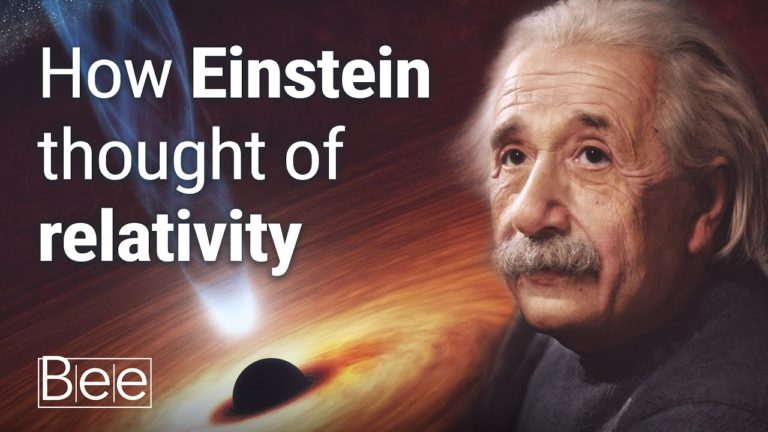How Einstein thought of the theory of relativity
In 1895, a 16-year-old boy imagined himself chasing a beam of light. This thought eventually changed the world forever. So how could one thought change the world so thoroughly?
We cannot start talking about Einstein without discussing a classical physicist Sir Isaac Newton. In 1687, Newton published his book “Mathematical Principles of Natural Philosophy”. In the book, he described his three Laws of Motion and the Law of Gravity. His book is considered one of the most important writings in the history of mankind. After watching an apple fall, he asked himself a question. And if the apple falls, does the moon also fall? These questions led him to discover the Law of Gravity.
According to his Law of Gravitation, every object in the universe enacts its own force of attraction on another object. And this force is the reason why we are stuck on Earth, why the moon orbits the Earth, and indeed, why the universe exists. But that didn’t answer all of Newton’s questions. Like, why do objects attract each other? What is the source of gravity? And why does Mercury’s orbit jiggle?
The rest remained a mystery until the era of Albert Einstein. In 1915, #Einstein published his Theory of General #Relativity, or in other words, his theory of #Gravity. In this theory, Einstein explained gravity and its source. He answered all the questions that Newton couldn’t, like Mercury’s precession.
Let’s take a step back here to 1905, to truly grasp where these different pieces of the puzzle come to life. This year, Einstein published his Theory of Special Relativity. It deals with the speed of light and the motion of objects. It was fine with non-accelerating objects, but the theory did not apply when gravity was present, or if the object was accelerating. He couldn’t quite figure the rest out. Until one fine day in 1907. He was observing a window washer on a ladder and had an epiphany.
He thought about what he would be experiencing while falling. He imagined himself there and realized that while falling, the ground would not be pushing him, so he would be in a free fall. That put some of the pieces together, but he still wasn’t fully finished. He began to think about falling again, this time he imagined himself in a room with no windows. On the surface of the Earth, you would weigh whatever your weight is now. But imagine if the room was in a spacecraft, moving in an upward direction with the same 9.8 meters per second squared as here on the ground. In that moment, if you were to weigh yourself, you would weigh the same as you do on Earth. Einstein realized that the observer would not be able to tell if he is on a spaceship, or on the surface of the Earth. That is because he would be moving at the exact same rate of acceleration. There would be no way to tell the difference.
This phenomenon is called the Equivalence Principle, which states that an object that is accelerating free of any gravitational pull is essentially no different than the same object that is stationary but affected by gravity. In other words, something moving in space with no gravity has the same mass as something on earth that is not moving. In his special theory of relativity, he could only deal with non-accelerating objects and the speed of light.
Let’s pause here for a second. This means that at that point, he knew how to unify his theory of special relativity with gravity. Luckily, he didn’t stop there. He did another thought experiment. This time he imagined what would happen if he pointed a laser beam from one side of the room towards the other. If the room were in a spaceship that was moving upwards with the same acceleration rate as earth, the height of the beam would slightly be lower on the other side of the room. As the floor moved up, it curved the light and caused it to bend down. But, this principle only applied in space. When he thought about the same experiment on earth, the light would appear to be straight. Of course, these two scenarios only happened in his brain. Let’s just take a brief moment to appreciate how brilliant he is to be able to conduct that experiment, all of that, in his brain.
Einstein wasn’t convinced though, as this violated the principle of equivalence. The acceleration of the room on the spaceship was the same as under the influence of gravity. The heights should be the same in both cases, so why were they different? He realized that the only possibility could be that the light beam must be bending under the gravitational influence. But how could this be? What does this bending of light mean? Well, thanks to his incredible imagination and deep thinking, he came up with an answer.
Do not forget to share your opinion with us to provide you with the best posts !




0 Comments